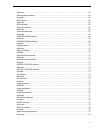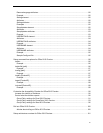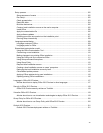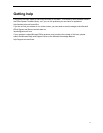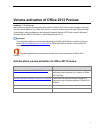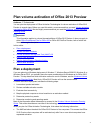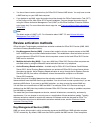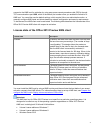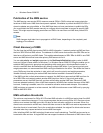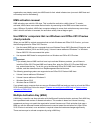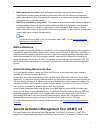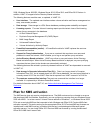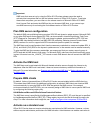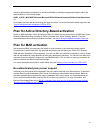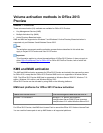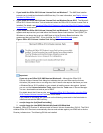
5
Windows Server 2008 R2
Publication of the KMS service
The KMS service uses service (SRV) resource records (RRs) in DNS to store and communicate the
locations of KMS hosts. KMS hosts use dynamic updates, if available, to publish the KMS SRV RRs. If
dynamic updates are not available, or if the KMS host does not have permissions to publish the RRs,
you must publish the DNS records manually or configure client computers to connect to specific KMS
hosts. This might require changing permissions on DNS to let more than one KMS host publish SRV
records.
Note:
DNS changes might take time to propagate to all DNS hosts, depending on the complexity and
topology of the network.
Client discovery of KMS
The first time that a KMS client queries DNS for KMS information, it randomly selects a KMS host from
the list of SRV RRs that DNS returns. The address of a DNS server that contains the SRV RRs can be
listed as a suffixed entry on KMS clients. This enables advertisement of SRV RRs for KMS in one DNS
server and KMS clients that have other primary DNS servers to find it.
You can add priority and weight parameters to the DnsDomainPublishList registry value for KMS
hosts on Volume License editions of Windows 7 or Windows Server 2008 R2. Doing so enables you to
establish KMS host priority groupings and weighting within each group, which specifies the order in
which to use KMS hosts and balances traffic among multiple KMS hosts. If you are using priority and
weight parameters, we recommend that KMS caching be disabled on the client. This allows the client to
query DNS every time that activation is tried, which will honor the priority and weight parameters,
instead of directly contacting the cached KMS host that last resulted in successful activation.
If the KMS host that a client selects does not respond, the KMS client removes that KMS host from its
list of SRV RRs and randomly selects another KMS host from the list. If the priority and weight
parameters are set, the KMS client will use them while finding another KMS host. Otherwise, KMS
hosts are selected randomly. After a KMS host responds, the KMS client caches the name of the KMS
host and, if caching is enabled, uses it for successive activation and renewal attempts. If the cached
KMS host does not respond on a later renewal, the KMS client discovers a new KMS host by querying
DNS for KMS SRV RRs.
KMS activation thresholds
The minimum requirement for Office 2013 Preview KMS activation is a KMS host and at least five KMS
clients in a network environment. Five or more computers that are running Office 2013 Preview volume
editions must contact the KMS host within 30 days for their activation requests to succeed. When five
clients have connected to a KMS host, clients that later connect to the KMS host receive responses that
allow the clients to be activated. Due to the re-activation schedule, the original five clients also become
activated when they request activation from the KMS host again.
After initializing KMS, the KMS activation infrastructure is self-maintaining. The KMS service can be co-
hosted with other services. A single KMS host can support hundreds of thousands of KMS clients. Most



